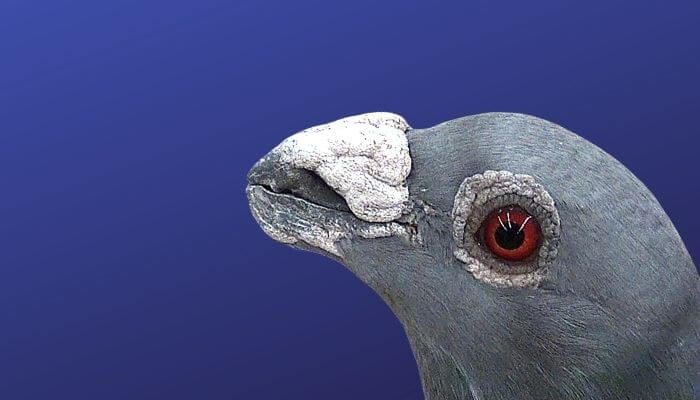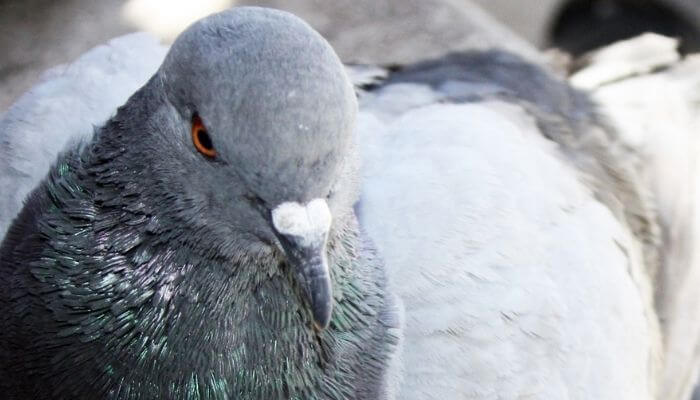The cere is a fleshy, membranous covering of the base of the upper mandible of a bird through which the nostrils open.
It is a defining characteristic that forms one of the criteria in show standards for exhibition birds and it is also a prime indicator in the gender and health of a bird.
The cere will often be one of the first things that an avian vet will look at to see if it can give any clues as to the health and condition of a pigeon.
What is a Pigeon’s Cere?
The cere is the fleshy, soft, very often bare patch that is found at the base of the upper side of a bird’s bill.

If you see a bird that looks like it has a soft, hairless, skin looking portion above and encroaching onto the upper portion of its beak, then that is what you can call the cere.
Many different bird species have cere, often birds of prey, but also in other kinds of birds such as skuas, turkeys, parrots, curassows, owls and, of course, our favourite, the pigeon!
Ceres vary greatly between species and breeds in terms of texture, size and colour.

Some are very knobbly features such as on the Barb pigeon (pictured above) while others are less prominent.
The etymology of the word cere gives no clue because cere is derived from the Latin word cera which means wax.
There isn’t a waxy quality to the cere nor does it produce or excrete wax.
The Function of the cere
Even though it is assumed that the cere is functional because of its prominent position, science hasn’t yet categorically defined the purpose of the cere.
What is known is that it surrounds the nares (nostrils) so there is a presumption that the cere may play a part in respiration and/or the bird’s sense of smell.
Other thoughts are that it may act as a filter for the nostrils, preventing debris from entering the bird’s airway or that it amplifies senses in some way.
What can the cere be used to identify in a pigeon?
The cere can be used to help owners and vets identify a number of different aspects of an individual bird.
1. Sex
If a bird’s cere is a darker colour, then it is likely to be a male, whereas lighter coloured cere’s tend to indicate females.
Lighter coloured birds do tend to have light coloured ceres, so this needs to be taken into account when trying to sex a bird that is a lighter colour to start with.

It’s also worth noting that this method of sexing a pigeon via the cere is only applicable to adult pigeons, because the cere’s of juveniles will change as they age until it reaches its final colouring.
There is also the fact that the cere of a male tends to be larger and more pronounced than the cere of a female.
Another thing to note is that the cere of some breeds of pigeon change colour to a shade of brown when they are in season and ready to breed.
Although the cere can help in gender identification, the only certain way to determine a pigeon’s sex is with a DNA blood test.
2. Health
The cere will often be one of the first things that an avian vet will look at to see if it can give away any clues as to the health and condition of a pigeon.
If there is any visible swelling, inflammation or general irritation in and around the cere, then this can be a strong indicator of there being respiratory issues for the pigeon.
A chapped cere can also indicate that something is not right with the bird, along with any kind of infection that might make it fill with pus.
Looking at the cere and the cere alone isn’t going to be a successful way of making an accurate diagnosis, but in general, if something doesn’t look right with a bird’s cere, it is the first visual indicator that a vet should be doing some more extensive tests to determine illness.
